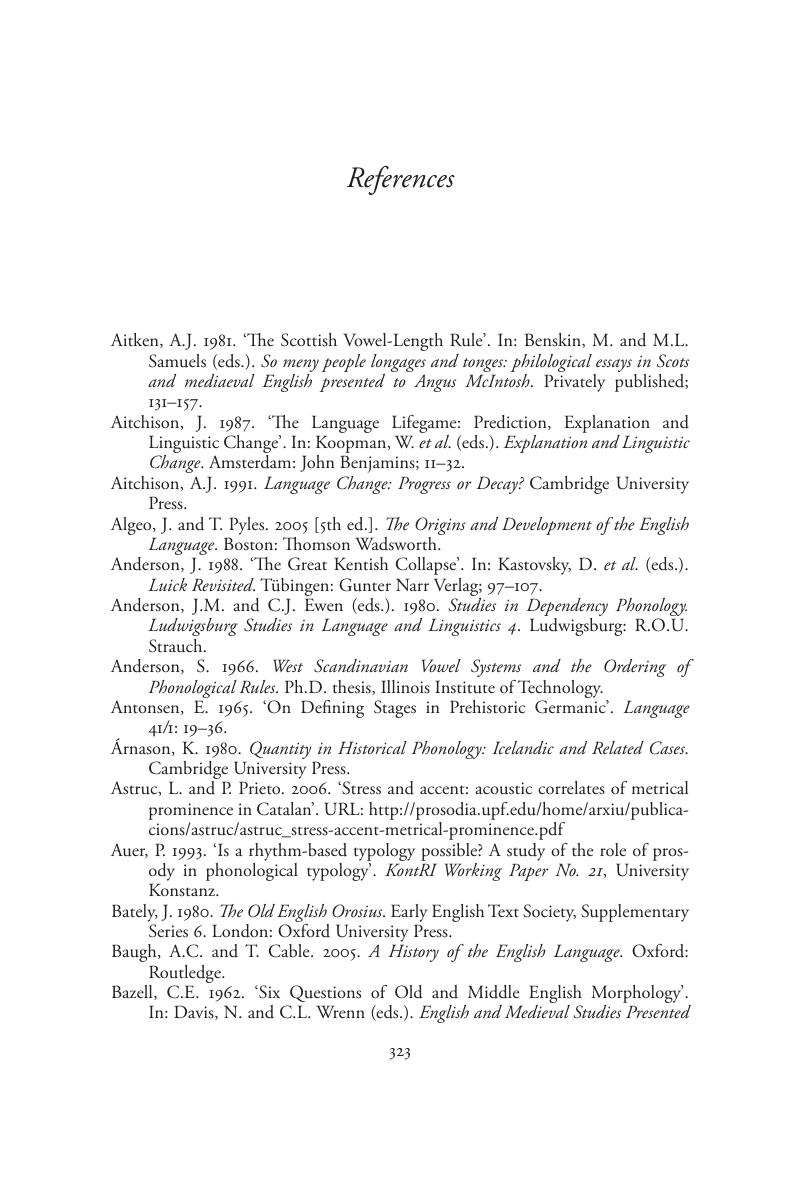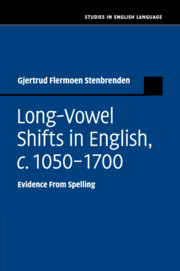Book contents
- Long-Vowel Shifts in English, c. 1050–1700
- Studies in English Language
- Long-Vowel Shifts in English, c. 1050–1700
- Copyright page
- Contents
- Figures
- Tables
- Glossary
- Chapter 1 Introduction
- Chapter 2 The development of OE ā
- Chapter 3 The development of OE ǣ
- Chapter 4 The development of OE ē and ēo
- Chapter 5 The development of ME ī
- Chapter 6 The development of OE ō
- Chapter 7 The development of ME ū
- Chapter 8 The development of OE ȳ
- Chapter 9 Summary and conclusions
- References
- Index
- References
References
Published online by Cambridge University Press: 05 February 2016
- Long-Vowel Shifts in English, c. 1050–1700
- Studies in English Language
- Long-Vowel Shifts in English, c. 1050–1700
- Copyright page
- Contents
- Figures
- Tables
- Glossary
- Chapter 1 Introduction
- Chapter 2 The development of OE ā
- Chapter 3 The development of OE ǣ
- Chapter 4 The development of OE ē and ēo
- Chapter 5 The development of ME ī
- Chapter 6 The development of OE ō
- Chapter 7 The development of ME ū
- Chapter 8 The development of OE ȳ
- Chapter 9 Summary and conclusions
- References
- Index
- References
Summary

- Type
- Chapter
- Information
- Long-Vowel Shifts in English, c.1050–1700Evidence from Spelling, pp. 323 - 337Publisher: Cambridge University PressPrint publication year: 2016



